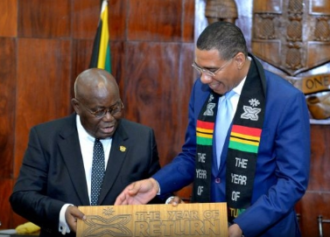Jamaica has suffered a long string of international rescues and ultimately failed fiscal programs. But last month’s bailout led by the International Monetary Fund could be the country’s final chance to avert an economic catastrophe.
The latest four-year program is controversial even among its bankrollers. The IMF led the negotiations with the Jamaican government, but wanted the World Bank and the Inter-American Development Bank to stump up more of the cash needed.
However, the latter two were sceptical of the program’s design and Jamaica’s ability to adhere to its conditions, according to people familiar with the matter. In the end, the IMF increased its contribution to $958 million, while the World Bank and the IADB will each lend $510 million.
The tense negotiations between the multinational organizations were like “a Mexican stand-off, while Jamaica was biting its nails”, according to a senior official involved in the talks. “It’s a high risk program, a last-ditch effort to avoid a massive adjustment, even a collapse.”
Many fear that the collapse may still come, unless Jamaica manages a tremendous turnround. The country restructured its domestic debts for the second time in three years in February, but is still lumbered with one of the world’s biggest debt burdens.
The IMF envisages that Jamaica’s debt-to-gross domestic product ratio will drop to about 95 per cent by 2020, but the program’s requirements are daunting: the government has to raise its primary budget surplus – before interest and debt repayments – to 7.5 per cent of GDP in the upcoming fiscal year.
Jamaica’s primary surplus is just over 5 per cent, so tax increases and quick, deep budget cuts already this year are required.
Read the rest of this story on FT


